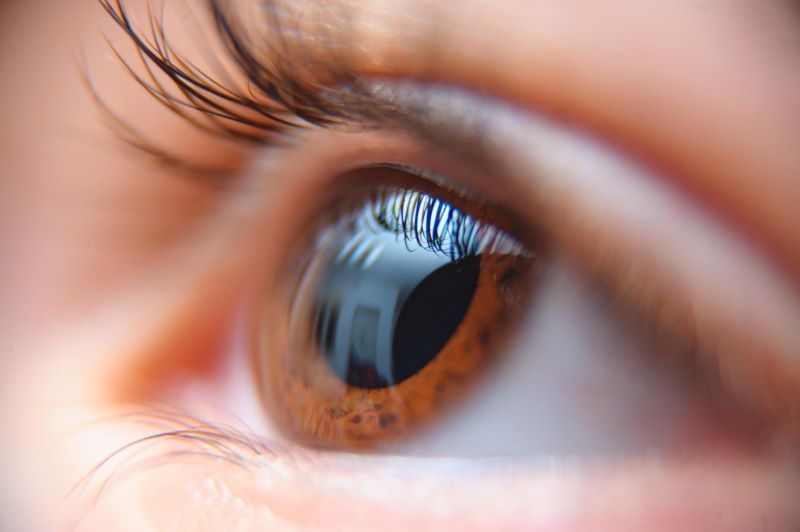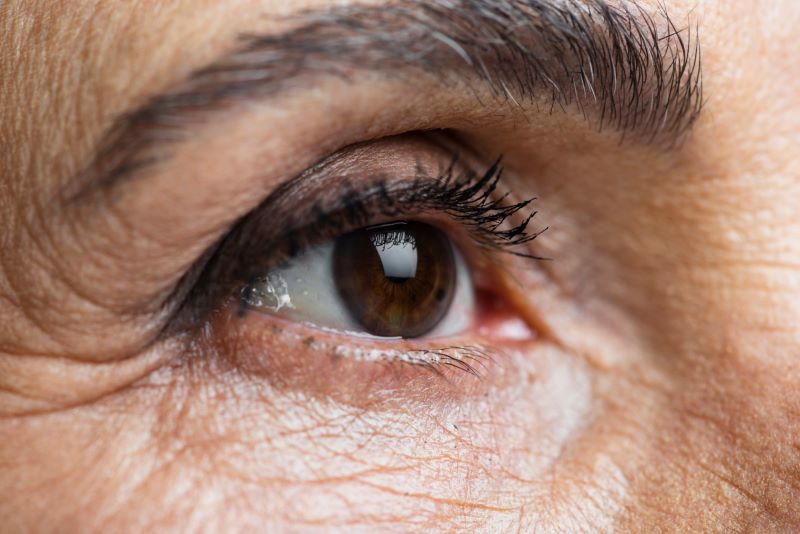How does TCM address fungal-infected corneal eye disease?
How does TCM address fungal-infected corneal eye disease?

What is fungal-infected corneal eye disease?
Fungal-infected corneal eye disease, also known as fungal keratitis, is a cornea infection. It may be caused by fungal pathogens such as the Fusarium, Aspergillus, or Candida species. They can be found in various regions worldwide, depending on the climate, geographical, and environmental conditions. They can enter the cornea through eye injury, contact lens wear, or exposure to contaminated water.
This condition can also be divided into two different types:
Superficial keratitis
Superficial keratitis affects the cornea's outer layer and tends to heal without a scar. While it can cause discomfort and temporary vision disturbances, this type is often less severe when compared to deep keratitis. This condition often heals without leaving a scar on the cornea, and vision returns to normal.
Deep keratitis
Deep Keratitis, on the other hand, affects the deeper layers of the cornea and can lead to scarring after healing. The presence of a scar on the cornea can affect vision, depending on its size, location, and how it interacts with light entering the eye.

What are the symptoms of fungal-infected corneal eye disease?
Eye pain
Fungal-infected corneal eye disease may cause eye pain that ranges from mild to severe, depending on the severity of the condition.
Blurred vision
It is not uncommon for those with this condition to experience blurred vision or a decrease in the quality of their vision.
Sensitivity to light
Those with fungal-infected corneal eye disease may experience an increased sensitivity to light, which can worsen their discomfort.
Excessive tearing or discharge
The affected eye may produce excessive tears or have a discharge.
How does TCM diagnose fungal-infected corneal eye disease?
Observation
Your doctor will begin by observing the eyes for signs of the condition, such as redness, excessive tearing, or swelling. They will also inspect the cornea for indications of changes in its colour, or shape. In addition to assessing the affected organ, it may also be extended to your general appearance and constitution to allow the doctor to gain a more complete understanding of your current condition.
Questioning
Questioning may be part of a diagnostic process that you are familiar with, as doctors from both Western and TCM approaches employ this method. This usually involves inquiries on noticeable symptoms, the sensations you have felt, your medical history, and when this condition started. As part of Chinese medicine for eye diagnosis, there may be additional questions on other factors such as sleep schedules, dietary habits, and the surroundings you are in.
Pulse examination
For both Western and Chinese medicine, pulse examination is used as a diagnostic tool, not just for eye diagnosis but also for assessing the health of the overall body. In the Western approach, pulse examination is often used to determine heart rate and pressure. On the other hand, in TCM the rhythm, width, and strength of the pulse at various locations on the wrist will be taken into consideration.
Here are the different types of pulse quality in TCM and how they may be interpreted by your doctor:
- Rhythm
A pulse with a quick rhythm may indicate excessive heat in the body. This may be accompanied by increased stress on the immune system or an inflammatory condition. However, a slow rhythm indicates a “cold” condition or a specific organ is not working well. It is commonly accompanied by cold hands and feet, as well as problems with blood circulation.
- Width
A thin pulse suggests blood deficiency which might be linked to fatigue, a deficiency of nutrients, or digestive issues. A wide pulse, on the other hand, might indicate food isn't moving well in your intestines, or you have a build-up of phlegm somewhere. This can happen with digestive issues or sinus congestion.
- Strength
A strong pulse may imply there is an excess in the body. This is often present with stress, high blood pressure, or headaches. On the flip side, a weak pulse might indicate a deficiency, which is often present with fatigue, weakness, or trouble sleeping.
Pattern differentiation
Based on the information gathered from observation, questioning, and pulse examination, a doctor who practices Chinese medicine will provide an eye diagnosis. Your doctor will do so by identifying patterns of disharmony such as excess heat, cold, dampness, or deficiency. Based on this assessment, you may be provided with a treatment plan that involves acupuncture, herbal remedies, and dietary changes to restore balance.
What are the TCM treatments for fungal-infected corneal eye disease?
TCM treatments for eye disorders, include herbal remedies that are tailored according to the individual’s eye condition, eye-acupuncture, along lifestyle modifications. If you are interested in learning more, you can read a testimonial written by someone whose husband was a patient with us here.
Eye acupuncture
As part of TCM treatment for eye disorders, you may be recommended to undergo eye-acupuncture. It involves the insertion of fine needles into specific acupuncture points around the eyes to promote the flow of Qi and blood. While it may not be the main treatment when it comes to fungal-infected corneal eye disorders, it can be used alongside herbal remedies and lifestyle modifications.
Herbal remedies
When it comes to TCM, you may be prescribed herbal remedies for eye disorders. The types of remedies will depend on your condition and the imbalance that has been identified in your body. For fungal-infected corneal eye disease, the herbs included may be used to clear heat, eliminate toxins, and nourish the eyes.
Some common eye herbs that may be prescribed could include:
- Forsythia fruit (Lian Qiao)
IN TCM, Lian Qiao is known to clear heat and toxins from the body. It can also relieve signs of swelling and pain in the eye.
- Eyebright (Xiao Mi Cao)
IN TCM, Eyebright is known to relieve eye irritation and reduce inflammation. It is also believed to soothe tired eyes and improve overall eye comfort.
- Rehmannia (Di Huang)
In TCM, Rehmannia, also known as Chinese foxglove, is used to nourish the yin and promote healthy blood circulation. It may be used to alleviate conditions such as dry eyes and blurred vision.
Lifestyle modifications
- Adjustments to food intake
In TCM, food is categorised into five elements: wood, fire, earth, metal, and water. Each element is associated with specific organs, and your doctor may recommend adjustments to food intake based on your condition. The aim of this is to achieve a balance within the body.
- Practicing proper eye care
Your doctor may recommend practices you can incorporate into your daily life to maintain proper eye care and prevent eye disorders. This can be instructions for proper contact lens hygiene, such as methods for cleaning and storing them, along with when they should be replaced. The doctor may also suggest scheduling regular eye exams to detect any eye disorders early.

Do you or a loved one require treatment for fungal-infected corneal eye disease?
If you or a loved one is interested in learning more about TCM treatments for eye disorders, get in touch with us at ICU Eye Care Unit.

